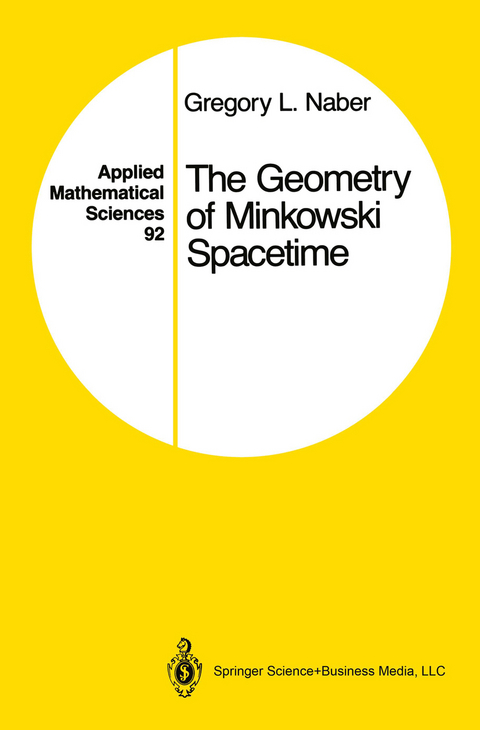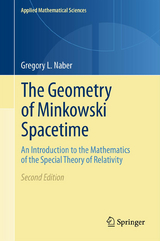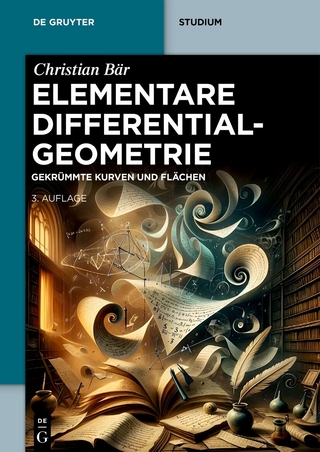
The Geometry of Minkowski Spacetime
An Introduction to the Mathematics of the Special Theory of Relativity
Seiten
2010
|
Softcover reprint of hardcover 2nd ed. 2011
Springer-Verlag New York Inc.
978-1-4419-3102-3 (ISBN)
Springer-Verlag New York Inc.
978-1-4419-3102-3 (ISBN)
- Titel erscheint in neuer Auflage
- Artikel merken
Zu diesem Artikel existiert eine Nachauflage
This mathematically rigorous survey of the special theory of relativity also details the physical significance of that mathematics. In addition to kinematics, particle dynamics and electromagnetic fields it treats subjects usually bypassed at elementary level.
This book offers a presentation of the special theory of relativity that is mathematically rigorous and yet spells out in considerable detail the physical significance of the mathematics. It treats, in addition to the usual menu of topics one is accustomed to finding in introductions to special relativity, a wide variety of results of more contemporary origin. These include Zeeman’s characterization of the causal automorphisms of Minkowski spacetime, the Penrose theorem on the apparent shape of a relativistically moving sphere, a detailed introduction to the theory of spinors, a Petrov-type classification of electromagnetic fields in both tensor and spinor form, a topology for Minkowski spacetime whose homeomorphism group is essentially the Lorentz group, and a careful discussion of Dirac’s famous Scissors Problem and its relation to the notion of a two-valued representation of the Lorentz group. This second edition includes a new chapter on the de Sitter universe which is intended to serve two purposes. The first is to provide a gentle prologue to the steps one must take to move beyond special relativity and adapt to the presence of gravitational fields that cannot be considered negligible. The second is to understand some of the basic features of a model of the empty universe that differs markedly from Minkowski spacetime, but may be recommended by recent astronomical observations suggesting that the expansion of our own universe is accelerating rather than slowing down. The treatment presumes only a knowledge of linear algebra in the first three chapters, a bit of real analysis in the fourth and, in two appendices, some elementary point-set topology.
The first edition of the book received the 1993 CHOICE award for Outstanding Academic Title.
Reviews of first edition:
“… a valuable contribution to the pedagogical literature which will be enjoyed by all who delight in precise mathematics and physics.” (American Mathematical Society, 1993)
“Where many physics texts explain physical phenomena by means of mathematical models, here a rigorous and detailed mathematical development is accompanied by precise physical interpretations.” (CHOICE, 1993)
“… his talent in choosing the most significant results and ordering them within the book can’t be denied. The reading of the book is, really, a pleasure.” (Dutch Mathematical Society, 1993)
This book offers a presentation of the special theory of relativity that is mathematically rigorous and yet spells out in considerable detail the physical significance of the mathematics. It treats, in addition to the usual menu of topics one is accustomed to finding in introductions to special relativity, a wide variety of results of more contemporary origin. These include Zeeman’s characterization of the causal automorphisms of Minkowski spacetime, the Penrose theorem on the apparent shape of a relativistically moving sphere, a detailed introduction to the theory of spinors, a Petrov-type classification of electromagnetic fields in both tensor and spinor form, a topology for Minkowski spacetime whose homeomorphism group is essentially the Lorentz group, and a careful discussion of Dirac’s famous Scissors Problem and its relation to the notion of a two-valued representation of the Lorentz group. This second edition includes a new chapter on the de Sitter universe which is intended to serve two purposes. The first is to provide a gentle prologue to the steps one must take to move beyond special relativity and adapt to the presence of gravitational fields that cannot be considered negligible. The second is to understand some of the basic features of a model of the empty universe that differs markedly from Minkowski spacetime, but may be recommended by recent astronomical observations suggesting that the expansion of our own universe is accelerating rather than slowing down. The treatment presumes only a knowledge of linear algebra in the first three chapters, a bit of real analysis in the fourth and, in two appendices, some elementary point-set topology.
The first edition of the book received the 1993 CHOICE award for Outstanding Academic Title.
Reviews of first edition:
“… a valuable contribution to the pedagogical literature which will be enjoyed by all who delight in precise mathematics and physics.” (American Mathematical Society, 1993)
“Where many physics texts explain physical phenomena by means of mathematical models, here a rigorous and detailed mathematical development is accompanied by precise physical interpretations.” (CHOICE, 1993)
“… his talent in choosing the most significant results and ordering them within the book can’t be denied. The reading of the book is, really, a pleasure.” (Dutch Mathematical Society, 1993)
Gregory L. Naber is a Professor in the Department of Mathematics at Drexel University in Philadelphia, PA.
1 Geometrical Structure of M.- 2 Skew-Symmetric Linear Transformations and Electromagnetic Fields.- 3 The Theory of Spinors.- A.1 The Euclidean Topology.- A.3 The Path Topology.- Appendix B Spinorial Objects.- B.1 Introduction.- B.2 The Spinning Electron and Dirac’s Demonstration.- B.3 Homotopy in the Rotation and Lorentz Groups.- References.- Symbols.
| Erscheint lt. Verlag | 1.12.2010 |
|---|---|
| Reihe/Serie | Applied Mathematical Sciences ; 92 |
| Zusatzinfo | XVI, 259 p. |
| Verlagsort | New York, NY |
| Sprache | englisch |
| Maße | 155 x 235 mm |
| Themenwelt | Mathematik / Informatik ► Mathematik ► Geometrie / Topologie |
| Naturwissenschaften ► Physik / Astronomie ► Relativitätstheorie | |
| ISBN-10 | 1-4419-3102-3 / 1441931023 |
| ISBN-13 | 978-1-4419-3102-3 / 9781441931023 |
| Zustand | Neuware |
| Haben Sie eine Frage zum Produkt? |
Mehr entdecken
aus dem Bereich
aus dem Bereich
Gekrümmte Kurven und Flächen
Buch | Softcover (2024)
De Gruyter (Verlag)
54,95 €
Nielsen Methods, Covering Spaces, and Hyperbolic Groups
Buch | Softcover (2024)
De Gruyter (Verlag)
109,95 €



